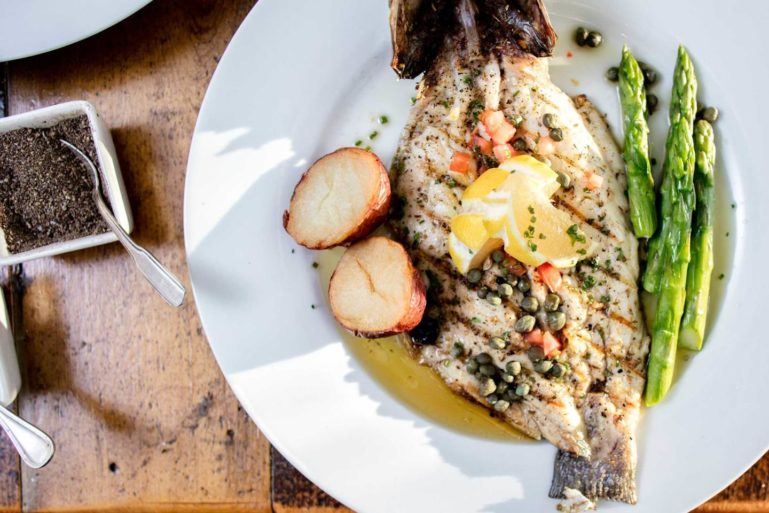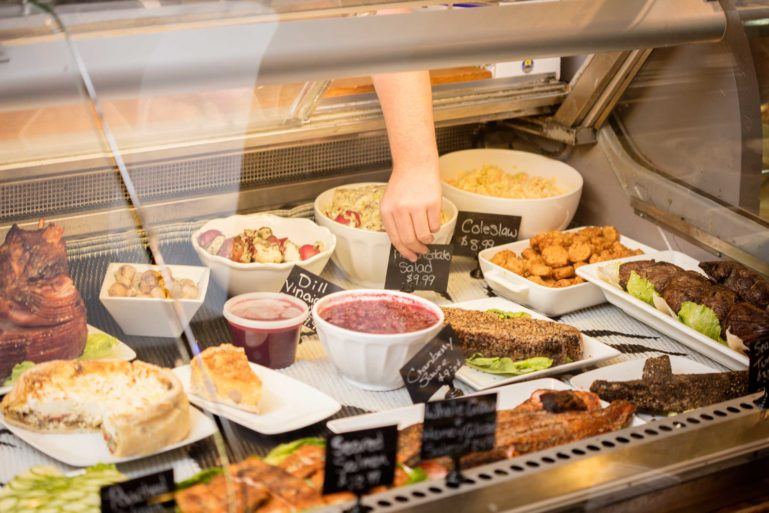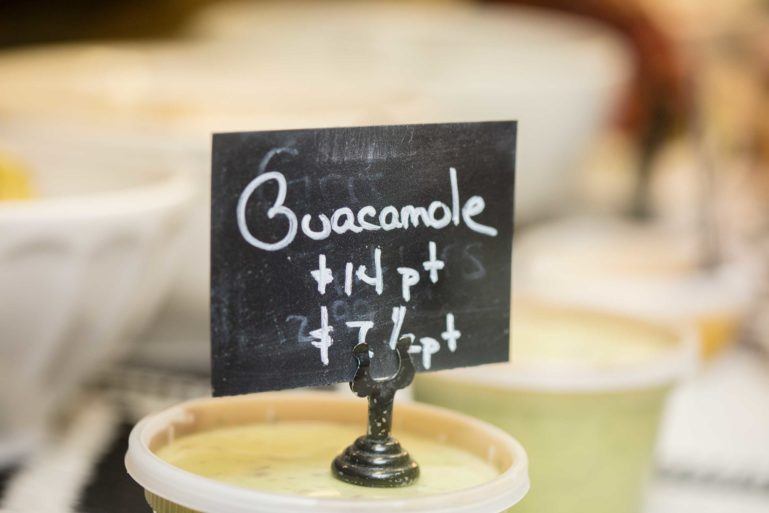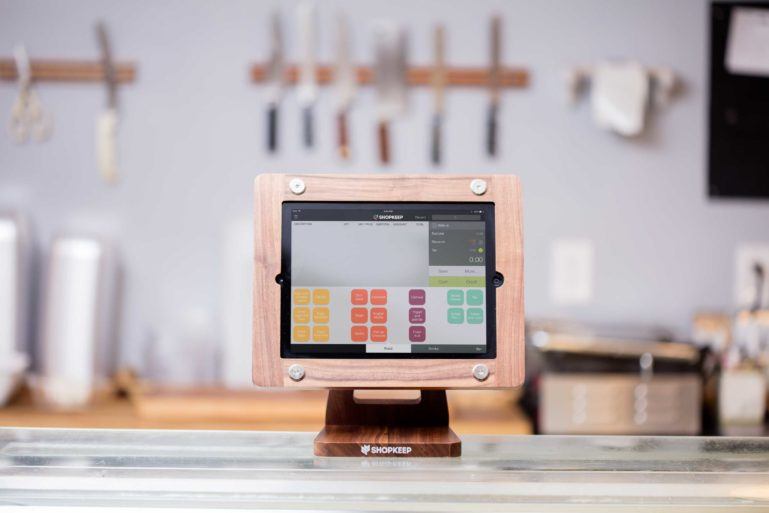
How to be a Food and Beverage Cost Control Ninja
Excellent food, friendly service, and a great atmosphere are the heart and soul of any successful restaurant. But success, and more importantly, sustainability, largely depend on being profitable.
In the restaurant industry, labor and inventory cost can eat up 50 – 75 percent of your total sales, so it’s imperative that you keep both of these figures under tight control and scrutiny. In this post, we’re going to discuss the latter, inventory cost. We’ll show you why food and beverage cost control is essential for keeping your restaurant and bar profitable and give you some tips on strategies you can start using today.
Let’s jump right in and examine this topic a little further, shall we?
Defining Cost Control for Food and Beverage
First, let’s explain cost control as the ongoing practice of identifying and reducing business expenses as a means to increase profits. Often food and beverage operations like cost control are stuffed together under one umbrella, but it’s also smart to look at them separately to get a clearer picture of their real cost.
Food and beverage cost control is not a one-and-done job; it’s an ongoing procedure. To get the best results you need to continuously identify areas of improvement and formulate solutions that will net positive results. Even some areas where you think it’s impossible to improve and you just chalk it up to the cost of doing business, trust us, there’s always more you can do; which brings us to our next point.
The Cost Of Doing Business
If you’re a restaurant owner, a manager, or both, you’re well aware that some amount of loss and waste is unavoidable in the foodservice industry. Dishes are spilled or not made to the customer’s satisfaction and therefore tossed in the trash. Inventory is accidentally contaminated or expires before the anticipated expiration date. Staff is eating unknowingly eating away at your profits with grab-and-go menu items such as french fries or fruit during their shift.
All of these seemingly small things can take a big chunk out of your bottom line if you don’t keep a firm grasp on the operation. Even for some of these inescapable expenses, there are still ways you can minimize your risk to have a more positive effect on your bottom line.
For example, to help minimize spillage problems in the kitchen and anywhere else in the establishment, and for safety, enforce a slip resistant shoe policy for every employee. From hostesses to bussers, everyone, even managers, wear non-slip shoes, no exceptions!

Another factor to consider when it comes to spillage is the flooring in your establishment. If you’re remodeling, choose a material that has a low-slip risk factor such as quarry tile or a vinyl textile. If you’re not rebuilding, remember to use slip-resistant mats behind the bar and in the kitchen as a quick way to get some traction.
You can also use slip-resistant mats in your walk-in cooler or freezer as a way to prevent containers of food from sliding out of place and contaminating the other products around it. You’ll also want to make sure your employees are educated in cross-contamination prevention methods when it comes to food storage, equipment, and personal hygiene.
And speaking of employees, how many staff members do you have that are always eating their way through their shift? When you work around food all day, it’s nearly impossible not to indulge in a quick taste of something that you can quickly grab. A piece of bread here or a french fry there. It may seem like an innocent thing, but this behavior can soon add up to a significant expense, as well as possible health code violations that can become an even more substantial problem.
The best way to combat the eat-as-I-work syndrome is to feed your staff before the start of their shift. For instance, if the front of house dinner staff shift starts at 4 pm, have them report an hour earlier for a meal and pre-show.
With a full stomach, they are less likely to eat on the clock, be adequately fueled for the coming shift, and have the energy to perform their job at a high level. It’s also a way great way to bring staff together around the table and boost morale.
While you have them together in one room, it’s an excellent opportunity for the managers on duty to conduct a pre-show and talk with the staff about daily specials, a significant change to a menu item, a large reservation booked for tonight, or anything else that is important to know before starting their shift.
So even for some of these unavoidable expenses like spillage or five-finger discounts, there are steps you can take to help minimize your risk in this department. As for unhappy customers that send their food back and require a total remake of the dish, or ask that you comp them the cost of the menu item, you just have to accept that those situations are the very real cost of doing business. You just can’t make everyone happy all of the time.
But that doesn’t mean you do nothing. These situations create food and labor waste that should be accounted for and tracked at the very least because it cuts into your profit margins. Also, keep track of the chef that prepared the dish and see if you start to notice a trend of meals that are sent back when he or she is at the helm.

How to Control Food Cost
Protecting your profit margins is a core focus of any business owner. But the unique challenges of owning or managing a restaurant are the rate at which inventory moves through your facility and its uncompromising shelf life.
While clothing may go out of style and a customer commits a crime of fashion by purchasing it off the discount rack, it’s not going to commit them to the hospital with a bout of food poisoning. High food cost will destroy your profit margin, and if you try to compensate by serving subpar food, it’ll ruin your business entirely.
Here’s how to keep your food cost in check while keeping your customers safe at the same time.
Conduct a Food Waste Audit
The first order of business is to measure and track what’s being tossed out. How much food is wasted due to cooking errors, prep waste, or spillage? According to Feeding America, full-service restaurants account for $14 billion of food waste in the U.S. – that’s a significant amount of waste.
Monitoring waste is a group effort, so get your entire staff involved. Record where waste is coming from and how much of it ends up in the trash. The audit process is an ongoing task throughout a shift, so we recommend doing it on days when you’re mildly busy. Not too busy where your staff can’t keep up, but busy enough that you should get a decent sample size.
An alternative to conducting it on slower days is to hire someone for the sole purpose of a food waste audit. With a dedicated staff member, you could even have the analysis happen during a Friday or Saturday night when there’s probably more waste occurring because it’s so busy. The process only has to happen for long enough to get a general sense of what’s occurring, so it doesn’t mean hiring someone to do this job full-time.
Once you have a decent sample size, you should start seeing trends and identify areas for improvement. For example, let’s say you have a kids menu that serves children up to 12 years old. During the waste tracking process servers see a trend of significant waste coming from the younger segment, toddler to grade school age children, ordering off the kids menu.
As a result of tracking and identifying this trend, you can implement a ‘tots menu’ for the younger kids at a lesser price and portion size. You reduce waste and keep the parents of those tiny customers coming back to your business.
Use a POS System to Track Inventory and More
While monitoring waste is not an automated activity, monitoring inventory can be. Proper inventory management is a crucial factor in cost control.
To control food cost, you first have to know what you’re spending. What is your inventory value? What is the Cost of Goods Sold (COGS)? What about raw goods such as ingredients or paper products that make up a menu item?
The best way to gather all this information is from your Point of Sale (POS) system. Any serious restaurateur needs a POS system to input orders and manages inventory from menu items to raw goods. Many systems also track employee contact information, labor cost, and shift detail, so you know who’s doing what during a shift. But most importantly, the right POS will have reports and analytics that offer valuable insight into your business. This insight will go a long way towards making food and beverage cost control issues a thing of the past.
To find this information without a POS system, you’ll need to collect data from various sources such as invoices and cash register receipts and put that data into Excel spreadsheets to get a rough estimate. Once you go through that tedious process a few times, you’ll understand why we’re urging you to consider investing in a POS system. It’ll save you hours each week, prevent some severe headaches, and help you take your business to the next level.
SEE ALSO: Choosing a POS System: Your 90-Day Plan
Define an Inventory Intake Procedure
Not only do you need a POS system to track inventory, but you also need to have standard procedures for receiving stock. As the business owner, you’re not always going to be there every time there’s a delivery. Therefore, assign one or two employees, whom you trust, to be responsible for receiving inventory in your absence.
Teach them how to check-in an order. Does the inventory you receive match the stock on the invoice? Are the quantities correct? Do the items have an honest shelf life and are the quality of products up to par? If you let lousy product in, you only have yourself to blame for your rising food costs.
Reuse, Recycle and Repurpose
These terms may not sound like standard terms associated with the foodservice industry; they are very much a part of helping you control food cost. For example, let’s say the employee you left in charge of receiving inventory accidentally accepted stale bread. Rather than throwing it out, repurpose it and make bread crumbs or croutons out of it.
Another great way to repurpose food is using it for multiple menu items. The best way to start is by creating a simple menu that utilizes a lot of the same ingredients. For instance, an Italian restaurant repurposes marinara sauce for multiple menu items such as pasta dishes, anything ‘parmed’ (chicken or eggplant parmigiana), and pizza sauce.
And although you can’t reuse or recycle food in the traditional sense of the definition, and if you did you’d have some serious legal issues on your hands, you can recycle it in the form of compost. Rather than throwing out those half-eaten meals that your customers leave behind, recycle them. Keep a couple of compost pails in key areas of the kitchen and encourage staff to deposit food scraps into the bucket rather than the garbage.
The less trash you have, the fewer trash bags you’ll have to buy and dumpster pick-ups you’ll have to schedule – which saves you money. And there’s the bonus of environmental and nutritional benefits too. Compost is used in place of synthetic fertilizers (chemicals) and yields a healthier product with less adverse effects on the environment.
Not all waste is compost material so make sure you keep a clear list of acceptable items posted near the pail so employees know what can and cannot go in there. One thing that will probably not be on your compost list is beverages, which lead us to our next topic.
SEE ALSO: 9 Food Safety Tips Every Restaurateur Must Follow
How to Control Beverage Cost
There is some overlap between controlling the cost of food and the cost of beverages, but there are also things only relevant to the latter and just as important.
Learn Proper Pour Techniques
Anyone who has seen an episode of Bar Rescue knows the importance of teaching bar staff proper pour techniques. Not only do proper pours ensure drink consistency, but they also keep your profit margins in check. Whether you choose the counting method or equip liquor bottles with measured pour spouts, find a way that works for you and your staff.

The Right Glassware
Along with learning the right pour amounts, you’ll also need the correct glassware. Drinks are crafted with a specific type of glass in mind. How many beers do you see served in martini glasses? How many martinis do you see served in pint glasses? Exactly.
The kind of drinks you serve at your establishment will determine the type of glassware you need. Only buy the ones that fit the drinks you serve.
Food Cost Formula
Now that you know how to identify areas of waste and the factors that contribute to it, it’s time to discuss a little math and why it’s essential.
Knowing what you spend on food will help you formulate realistic menu prices and healthy margins, so you stay profitable without pricing out your local market.
To find your food cost percentage for the week, take your opening inventory value, add the cost of any inventory purchases, and subtract the closing inventory value. This total gives you the cost of food sold for the week. Take that value, divide by food sales revenue, and multiply by 100 to find your food cost as a percent.
Let’s say you start the week with $10,000 of inventory. As the weekend rush approaches you stock up on $2,000 worth of product. At the end of the week your ending inventory value is $10,500 and you had $5,000 in sales.
($10,000 + $2,000) – $10,500 = $1,500. Then take $1,500 / $5,000 in sales = .30 x 100 = 30%.
SEE ALSO: Order Up! Your Restaurant Menu Pricing Strategy
The Bottom Line
As a restaurant owner, you’re also the cost controller. It’s your job to set menu prices based on margins, product cost, and many other variables and fixed costs that we didn’t even begin to cover. If you plan on staying in business for the long haul, food and beverage cost control will be a significant factor that contributes to your success. The sooner you get it under control, the better of you’ll be.
Want to try ShopKeep for yourself?
Just answer a few easy questions.
Need help finding the right point of sale?
Just complete the form. We’ll call you right back to explain how ShopKeep can work for you.
Hit the ground running.Sprinting, in fact!
Read our free, comprehensive guide, Small Business 101, to learn all you need to know about starting a thriving business.

